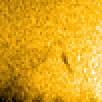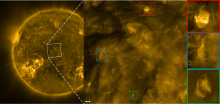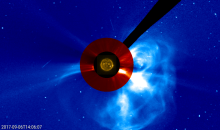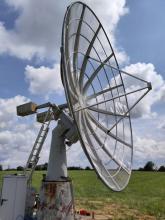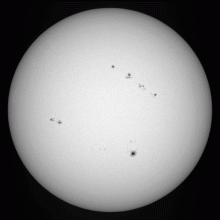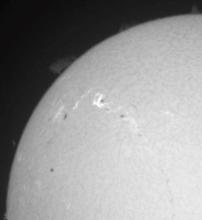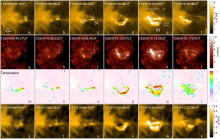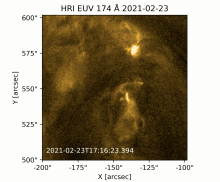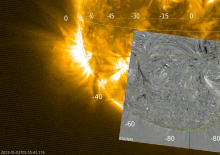ESA’s Solar Orbiter spacecraft has discovered a multitude of tiny jets of material escaping from the Sun’s outer atmosphere. Each jet lasts for between 20 and 100 seconds, and expels plasma at around 100 km/s. These jets could be the long-sought-after source of the ‘solar wind’.
SIDC News
A joint scientific team led by the Royal Observatory of Belgium (ROB) and the KU Leuven has found that high-frequency magnetic waves could play an essential role in keeping the Sun’s atmosphere at millions of degrees. This finding sheds a new light on the most intriguing solar mystery: what makes the Sun’s atmosphere hotter than its surface?
The SIDC Forecasters at the Royal Observatory of Belgium played a key role in an ESA exercise to define how to communicate clearly on the impacts of extreme space weather events.
Mark your calendars for the weekend of 9 and 10 of September 2023!
An important milestone was achieved mid-June when the mount and parabolic reflector were installed for the Open Access Radio-Telescope project
Due to a reshuffling of responsibilities, SILSO will from now on run under the single Directorship of Laure Lefèvre, and therefore any future questions related to the SILSO management or data should be addressed to Laure.Lefevre@oma.be. We take this opportunity to thank both Frédéric Clette and Laure Lefèvre for their dedication to the SILSO operations during many years.
There was quite the excitement in USET team last week. Not one, but two sunspot regions were visible with the naked eye!
Ground based optical and radio solar instruments from ROB monitor together the recent period of increased solar activity
The EUI telescope on Solar Orbiter was able to catch the miniature version of solar flares and mass ejections. Thanks to sharp and fast imaging of the EUI telescope, researchers could observe magnetic reconnection taking place repeatedly on very small scales.
In the early hours of April 20 a solar eclipse took place. Regions on Earth that saw, at least, a partial eclipse include parts of South/East Asia, Australia, and Antarctica. This meant that only a very small fraction of the world's population was able to witness this event. Even if it was a difficult eclipse to observe from the ground, PROBA2 had a front-row seat!
High-frequency sideways waves were detected for the first time using Europe's new solar observatory Solar Orbiter. These sideways waves are much more energetic than previously observed waves, and could play a role in heating the solar corona.
The telescope EUI onboard the satellite Solar Orbiter could capture Mercury while it transited the Sun. Scientists use the little black as a guide for science-approved photo-editing.
